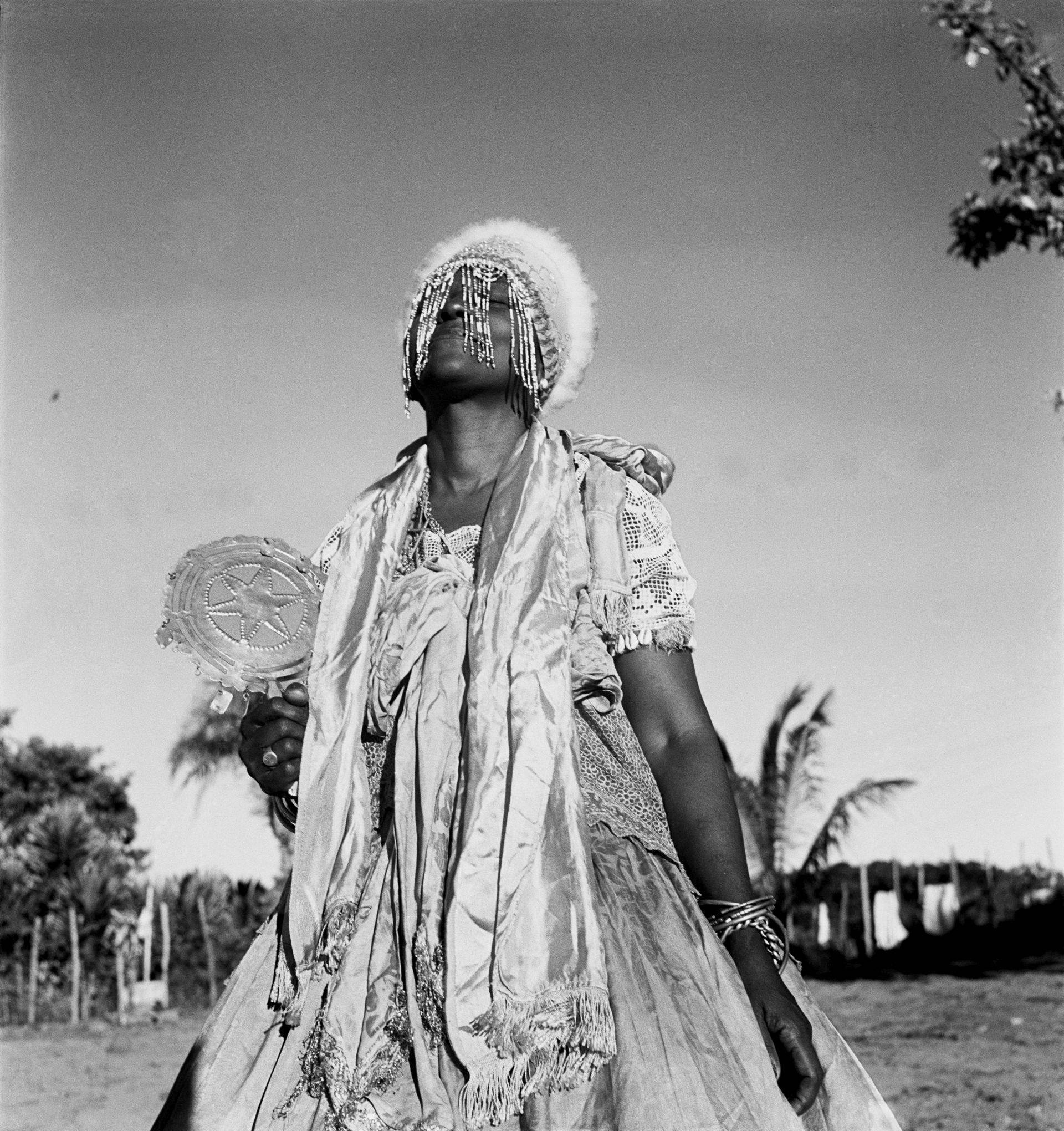Samara Paiva & the Legacy of Afro-Brazilian Heritage
I discovered Samara Paiva’s work in August 2024 while visiting the historic and cultural capital of the state of Bahia in Brazil: Salvador. The city was celebrating the annual literary and artistic festival FLIPELO and many institutions were open to the public. Somewhat by chance, I took the opportunity to enter the Casa do Benin, the House of Benin.
Located in the historic center of Salvador, the Pelourinho, this place dedicated to Beninese culture and inaugurated in 1988 features a rich collection of artefacts from the region of the Gulf of Benin. Most of this collection was gathered by the French anthropologist and photographer Pierre Verger during his travels across the African continent. Famous for his black-and-white photographs of the Bahian population, Verger significantly contributed to the understanding of the Afro-Brazilian culture.
Pierre Verger, Salvador, Bahia, Brazil, 1950-1982. Photo Courtesy: Fundação Pierre Verger
The House of Benin also hosts temporary exhibitions and artist residencies. One must climb the stairs leading to a second exhibition room to discover `Portraits of a Space-Time’, Samara Paiva’s first institutional solo show.
Portraits, still lifes, and interior scenes invite us into the delicate universe of the artist. Samara’s atmospheres combine power and vulnerability, familiarity and strangeness. The black figures she paints appear lost in thought, engaged in resting, preparing, meditating, perhaps reading or listening to music. Each of the character has his own universe, reaching and holding the viewer. The artist predominantly represents women in domestic spaces. Familiar environments allow her to explore the interiority of these bodies with lightness and tenderness.
Such as Lynette Yiadom-Boakye or Danielle McKinney, Samara Paiva is interested in the ordinary, in intimacy, in the silences of these black bodies that she primarily aims to make visible. She says `My narrative portrays moments of everyday life. Those moments can be a feeling or the relationship between a figure and space. My practice is a way to keep those memories alive’.
Through her canvases, their identities can be constructed freely, with no limits or boundaries. Three words borrowed from the exhibition title thus reveal the message carried by the artist since the beginning of her career: Freedom, Independence, and Emancipation.
Miguel Rio Branco, Blue Tango, 1984. Photo Courtesy: MoMa
Miguel Rio Branco, Capoeira, Brazil, 1989. Photo Courtesy: Magnum Photos
Therefore, exhibiting in the city of Salvador couldn’t be more significant of Samara's artistic practice. Five hundred years ago, European explorers discovered the Bay of Bahia, the `Bay of All Saints’, marking the arrival of trade and slavery in Brazil. The slave traders imported 1,300,000 slaves to Bahia - twice as many as in the entire United States - before slavery was abolished in Brazil in 1888. In this very central square of the Pelourinho where the Casa do Benin is located, slaves were punished in front of the homes of wealthy sugar and cocoa plantation owners.
The history of Portuguese colonialism is rooted in every street of the Pelourinho. The Largo do Pelhourino is indeed the most important ensemble of colonial architecture from the 17th and 18th centuries in the Americas, according to UNESCO, serving as a testament to this heavy slave-trading past. It is particularly home to the house and foundation of the successful Brazilian writer Jorge Amado. At the age of 19, he wrote his first short novel, Cacao, which describes the working conditions of slaves in the cocoa plantations of southern Bahia. In 1943, he returned to this theme through his magnificent book The Violent Land.
Today, 80% of the inhabitants of Salvador and its surroundings are descendants of slaves and the Afro-Brazilian culture is omnipresent in the city. For instance, through the Afro-Brazilian capoeria, invented by slaves to defend themselves and considered as an art of liberation, through the play of the berimbau, an instrument created and crafted by slaves and notably used in capoeira, and many other rhythmic instruments (atabaque drums, ganzas...) used by Afro-Brazilians in clubs, concerts and during religious ceremonies.
Pierre Verger, Candomblé Joãzinho da Gomea, 1946. Photo Courtesy: Fundação Pierre Verger
Pierre Verger, Candomblé Opô Afonjá, 1946. Photo Courtesy: Fundação Pierre Verger
Numerous African pottery, originally made by slaves but still produced today in the same places as 200 years ago, are sold at the São Joaquim market, alongside all kinds of ingredients for traditional recipes like Acarajé and various foods for the Gods of Afro-Brazilian religions. Slaves were forced to convert to Catholicism but indeed still preserved many traditional African beliefs. The religious culture of Bahia indeed draws its influence from many African rites, particularly the most well-known of them, the Candomblé.
The practice of many African cults in Brazil has favored the preservation of African history, but the Bahia Carnival is undoubtedly the greatest demonstration of the African heritage that marks the region. This cultural event initiated in 1950 takes place every year in February and particularly celebrates Samba. Its story and the one of the musicians who have marked it, such as Timbalada or Osvaldo Bailado, is now counted at the Bahia Carnival Museum in Salvador.
Alongside architecture, literature, music, gastronomy, Samara contributes to the legacy of the Afro-Brazilian cultural heritage, the visibility of black identities but most importantly, allows to create new narratives for her generation. Born in 1995 in Maués, in the Amazon, Samara currently lives and works in São Paulo. She is represented by the NONADA Gallery in Rio de Janeiro, Salvador and São Paulo.
Clara Eugène
Contributing Writer, MADE IN BED









